I'm sharing a piece published in Zee Quarterly about the Museo Sugbo. It was the beleaguered Gov. Gwendolyn Garcia who envisioned and made happen this highly rated museum in Cebu. Garcia has been holed up in the Capitol since before Christmas
because of a Presidential suspension. I don't have the facts so I can't
judge her, but I know that she did some good projects in Cebu,
including creating this fine museum. I will state that the Liberal Party
leaders in Manila seem to be messing around with Cebu's politics,
positioning I suppose for the upcoming May elections.
Manila, Cebuanos
are paying attention.
A STORY OF HOPE
Cecilia Manguerra Brainard
Published in Zee Lifestyle, June 2010
My
family called it, “Ang Palacio ni Yvonne - Yvonne’s Palace.” We used to
drive by it most afternoons after Papa picked us up from our schools
and took us on a ride. The route included a stop at the kiosk near
Magellan’s Cross for Coca Cola and packages of M&Ms; a drive
down the pier for fresh sea air; a stop at Monay’s Bakery for hot Pan
Frances and Pan Monay; then the ride home down what is now M.J. Cuenco
Avenue. That’s when we’d see old stone Provincial Jail and we children
used to point and exclaim, “Ang palacio ni Yvonne!” We were referring to
my Yaya Yvonne who had stolen some things from our house and ended up
in the Provincial Jail of Cebu – the Carcel de Cebu. I used to feel sad
that she had ended up there. She had after all taken care of me; she had
even taught me to love raw green onions.
These
memories were running through my head when I visited the old Carcel one
January day, Sinulog week in fact, when traffic was impossible, and to
my surprise discovered that the Carcel was walking distance from old
Historic Cebu where I stay when I am in Cebu. I heard that the Carcel
had been turned into a museum in August 2008, another welcome addition
to the increasing cultural developments in Old Cebu. I was curious as I
made my way to the place. I remembered it as a dreary place with gray
walls and electrified barbed wire; it was near the old cemetery and the
ice plant. It was heartening to see the pretty landscaping in front and
the new signs announcing its respectable new name, Museo Sugbo. I liked
the elegant ring of the name too – Museo Sugbu –which made me think of
the Museo de Oro of Lima, Peru.
I stared at the clean
walls of the Carcel, surprised that they were made of antique coral
stone blocks after all. All my life, I thought it was made of cement
that had turned dark and dingy. It was Jobers Bernales, Director of the
Museum who explained that the walls had been stripped off its cement
plaster to uncover the coral blocks, which probably came from Parian
Church, a grand structure in historic Cebu, demolished in 1877-78 by the
Bishop after a long battle with its parishioners. Indeed the Carcel
displayed a Spanish Colonial look. Jobers explained that this was the
look that Governor Gwen Garcia wanted when she envisioned the creation
of the museum. The Provincial government developed and funds the museum.
The museum had been built in the tailend of the
Spanish Occupation as a one-story building to house prisoners of the
entire Visayas District, accounting for its fairly large size. Don
Domingo de Escondrillas, the only Cebuano engineer-architect, designed
it. The second floor was added during the American occupation. The
Americans not only used the facilities for prisoners, but at some point
used the place as horse stables. When the Japanese occupied Cebu, they
used the Carcel to imprison guerrillas, the lucky ones who survived the
torture they endured at the Cebu Normal School. When World War II ended,
Cebuanos threw Japanese collaborators into the Carcel.
Steeped
in this dark history, the Carcel should have been a depressing place
but somehow the work done to the facilities – the chipping off the
cement, the removal of extraneous rooms and shacks – erased any negative
feelings of the place. The ten galleries surrounding a courtyard have a
crisp solid look. The galleries are not huge; they are not crammed with
a lot of artifacts, but there’s a respectful elegance in the display of
the items that document Cebuano history on culture.
On the left
near the entrance is one of my favorite galleries – the Pre-History
Gallery. It gives visitors a good idea of how ancient Cebuanos looked
like physically, the tattoos they had, what they wore, what tools they
used, how they lived, as well as how they died. The Pre-History Galley
has pottery shards, earthenware, ceramics, stoneware, shell beads, log
coffins, and other funerary items. What caught my attention was a skull
with pinprick holes on the forehead, possibly a result of syphilis, but
more significant was the sloping shape of the forehead, indicating the
person had undergone skull formation; the baby’s skull had been bound
somehow to create the sloping elongation. The only other place I’d seen
skull formation was in Peru’s National History Museum in Lima, where I
saw elongated skulls and skulls with two large protrusions on top. It
was interesting to relate the similarities of these two cultures.
The
galleries unfold as if telling a story, and from the pre-Hispanic
section, I climbed the steep stairs to the second floor with the Spanish
gallery which shows
copies of the official appointment of Miguel
Lopez de Legazpi as governor of Cebu, dated August 6, 1569; there is a
copy of Legazpi’s letter to the King of Spain, dated May 27, 1565, the
oldest letter to have been sent from the Philippines.
There is a
Katipunan Gallery with an anting-anting vest as well as an anting-anting
handerchief that belonged to Leon Kilat, a name I used to puzzle over
whenever I saw his statue in Carcar. Born Pantaleon Villegas, he was the
Katipunero who led the Cebuanos against the Spaniards in the Tres de
Abril (April 3, 1898) Revolution. The story goes that the Spaniards had
informed the Cebuano families that Carcar would be destroyed if they
didn’t turn over Leon Kilat; the old families obliged by having Leon
Kilat assassinated.
Another section that fascinated me
was the National Museum Branch which has artifacts from recent
excavations done in Plaza Independencia and Boljoon Church grounds. Most
interesting are gold death facial covers, the skull on which these gold
coverings were found, gold chain, a rare blue and white ceramic ewer,
celadon ware, and a rare underglaze blue covered powder box decorated
with a Chinese boy carrying a puppet. The gold death facial covers
interested me most because I had also seen similar gold death masks and
facial covers in Peru.
The other museum galleries
include: the War Memorial Gallery; and memorabilia of Edward Sharp (a
Thomasite), Justice Sotero Cabahug, Senator Vicente Rama, and Gregorio
Abellana (a Katipunero). These galleries also document interesting
periods of Cebuano history.
Jobers Bernales says the
museum plans to add interactive facilities in the form of LCD monitors
with videos in the prehistory and history galleries. They will be adding
a changing gallery, which will showcase monthly or quarterly exhibits.
There will also be a media gallery complete with old printers and
broadcasting equipment. A gift shop and small café will be opened on the
ground floor of the former bartolinas or isolation cells, near the old
Spanish-period wishing well.
By August, the museum hopes to have a
branch of the National Library, a multimedia library with internet
facilities. Finally, once the twelve galleries are complete, Museo Sugbo
plans to print a Museum Guide for Teachers, with lesson plans and
questionnaire for classroom use.
By the time I leave
the Museo Sugbo, any dread about the old Carcel has vanished and in its
place I feel pride for my Cebuano heritage. The documentation of Cebuano
culture and history in the Museo Sugbo validates what I had always
known, what had always been there, but which had been ignored for so
long.
The sad story of Yvonne’s Palace has been replaced with a story of hope.
~~~~
Bio:
Cecilia
Manguerra Brainard is the award-winning writer and editor of two novels
and over a dozen other books. She has a website at
http://www.ceciliabrainard.com and a blog at
http://cbrainard.blogspot.com
~~
Above photo above shows President Aquino and Gwendolyn Garcia
Friday, January 11, 2013
Article on Museo Sugbo, creation of Gwendolyn Garcia by Cecilia Brainard
 Cecilia Manguerra Brainard's official website is ceciliabrainarddotcom. She is the award-winning author and editor of 22 books, including When the Rainbow Goddess Wept, The Newspaper Widow, Magdalena, Selected Stories, Vigan and Other Stories, and more. She edited Growing Up Filipino 1, 2, & 3, Fiction by Filipinos in America, Contemporary Fiction by Filipinos in America, and other books..
Her work has been translated into Finnish and Turkish; and many of her stories and articles have been widely anthologized.
Cecilia has received many awards, including a California Arts Council Fellowship in Fiction, a Brody Arts Fund Award, a Special Recognition Award for her work dealing with Asian American youths, as well as a Certificate of Recognition from the California State Senate, 21st District, and the Outstanding Individual Award from her birth city, Cebu, Philippines.
She has lectured and performed at UCLA, USC, University of Connecticut, University of the Philippines, PEN, Shakespeare & Company in Paris, and many others. She has served in the Board of literary arts groups such as PEN, PAWWA (Pacific Asian American Writers West), among others.
Cecilia Manguerra Brainard's official website is ceciliabrainarddotcom. She is the award-winning author and editor of 22 books, including When the Rainbow Goddess Wept, The Newspaper Widow, Magdalena, Selected Stories, Vigan and Other Stories, and more. She edited Growing Up Filipino 1, 2, & 3, Fiction by Filipinos in America, Contemporary Fiction by Filipinos in America, and other books..
Her work has been translated into Finnish and Turkish; and many of her stories and articles have been widely anthologized.
Cecilia has received many awards, including a California Arts Council Fellowship in Fiction, a Brody Arts Fund Award, a Special Recognition Award for her work dealing with Asian American youths, as well as a Certificate of Recognition from the California State Senate, 21st District, and the Outstanding Individual Award from her birth city, Cebu, Philippines.
She has lectured and performed at UCLA, USC, University of Connecticut, University of the Philippines, PEN, Shakespeare & Company in Paris, and many others. She has served in the Board of literary arts groups such as PEN, PAWWA (Pacific Asian American Writers West), among others.
Subscribe to:
Post Comments (Atom)




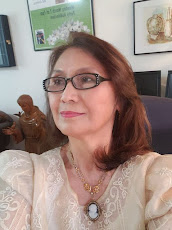

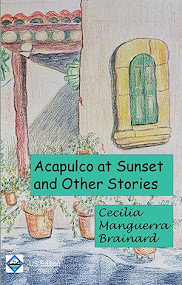



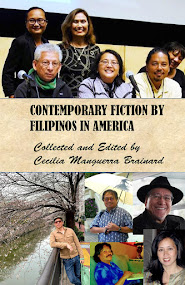
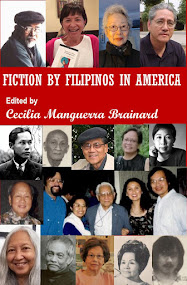



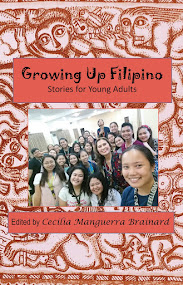
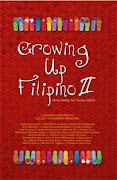


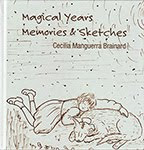


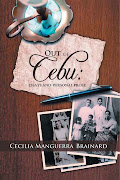

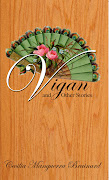

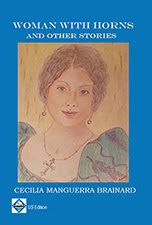

No comments:
Post a Comment